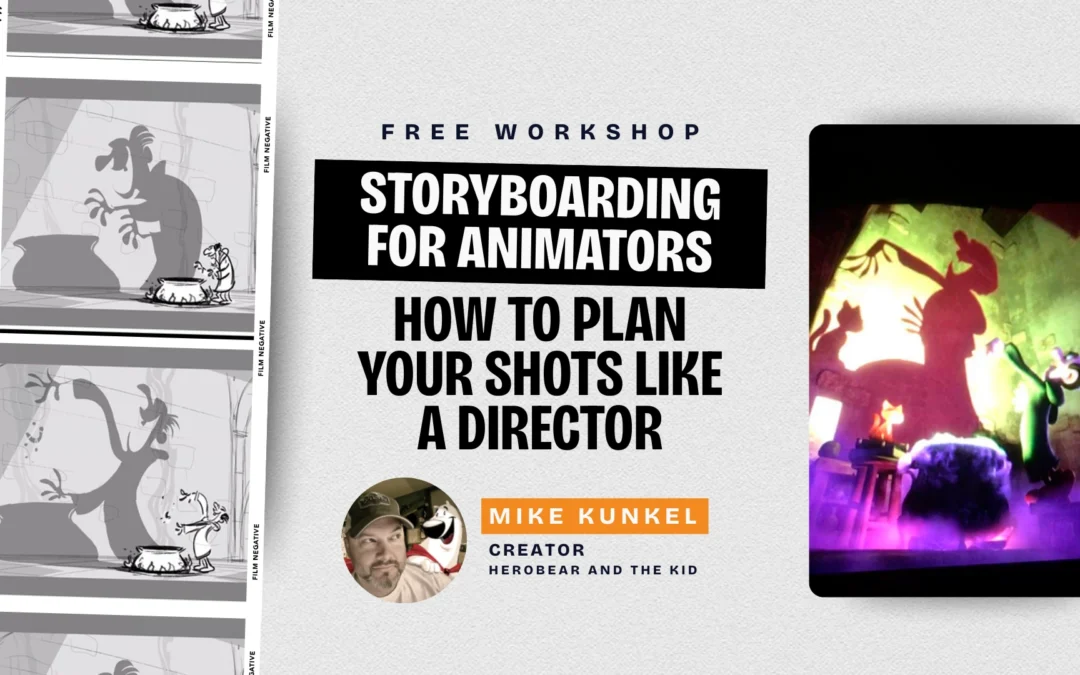If you’ve ever wondered how to bring a character’s run to life with energy, style, and believability, you’re in the right place! In this tutorial, veteran animator and Animation Mentor instructor Jason Martinsen walks us through his process for animating a dynamic run cycle in Maya.
Watch the full tutorial above where Jason shares his personal workflow, drawing on years of professional experience to help animators of all levels.
Meet Jason Martinsen
Jason Martinsen has been a professional animator since 2006 and is currently a supervising animator at Sunrise Productions. He previously worked at Framestore, Reel FX, Sony Imageworks, and Blue Sky Studios on film productions like Storks and Ferdinand. Other projects include Scoob!, Back to the Outback, Rumble and Monkey King.
You can learn more about Jason and his work here.
Step 1: Gather Reference for Your Run Cycle Animation
Every great run cycle animation starts with solid reference. Jason recommends finding real-world run cycles, either by shooting your own footage or sourcing clips online. Reference helps you understand the mechanics and timing of a run, which you can then adapt and stylize for your character.
Key Poses to Block Out:
- Stride (high point, feet furthest apart)
- Down (lowest point)
- Mid-stride (passing position)
- Push-off (preparing for next stride)
Unlike a walk, a run features moments where both feet are off the ground, adding vitality and motion.
Step 2: Mirroring and Refining Poses in Maya
Once your key poses are set, mirror them for the opposite side of the cycle. Jason demonstrates several methods:
- Use animation tools to mirror poses automatically
- Manually copy and flip body parts using the graph editor (scaling curves by -1)
- Copy and paste keys for arms and legs for symmetry
This ensures a balanced and believable run cycle.
Step 3: Adding Breakdowns to Clarify Motion
Breakdown poses are essential for clarifying the motion between key poses. In a run, breakdowns help define the low point, the passing position, and the dynamic push-off. Jason emphasizes:
- Translating the body side-to-side for a natural cadence
- Exaggerating the stride or body lean for stylized runs
- Observing hip movement—adding a forward “pump” at push-off for extra dynamism (use with care if your camera is tracking the character)
Step 4: Squash, Stretch, and Spline for Life-Like Animation
To inject life into the run, Jason incorporates squash and stretch into the chest, head, and face. This subtle up-and-down motion adds weight and elasticity. He also demonstrates how to:
- Offset the chest and head movement for a cascading effect
- Use the graph editor to refine arm swings, favoring snappier timing and overlapping action
- Copy arm animation from one side to the other, then offset the keys to maintain the cycle
Step 5: Stylization and Polish
The final stage is all about adding personality and polish:
- Caricature the leg movements for a more stylized run
- Adjust the timing so the feet “pop” off and land with energy
- Add facial squash and stretch—raising brows and lids on the up, lowering them on the down—for close-up shots
Jason encourages animators to experiment with different levels of exaggeration and to pay attention to how changes in body mechanics affect the overall feel of the run.
Key Takeaways for Run Cycle Animation
- Reference is key: Always start with real movement
- Break down the process: Block, mirror, breakdown, spline, and polish
- Add life: Use squash and stretch, overlapping action, and subtle offsets
- Experiment: Try different levels of stylization for unique results
Frequently Asked Questions
What is a run cycle in animation?
A run cycle is a looping sequence of poses that creates the illusion of running movement in a character.
How do you make a run cycle dynamic?
Use strong reference, exaggerate key poses, add squash and stretch, and refine breakdowns for energy and believability.
What’s the difference between a run and a walk cycle?
In a run, both feet leave the ground during the stride, while in a walk, at least one foot is always in contact with the ground.
Want to be mentored by professional animators like Jason?
At the core of Animation Mentor are our 3D Character Animation and Game Animation programs. Follow your animation dreams by learning from animators at studios like Disney, DreamWorks, Pixar, ILM, Riot Games, Netflix, and Blizzard!
Keep an eye on our social media platforms for more tutorials, live workshops, and new courses.



